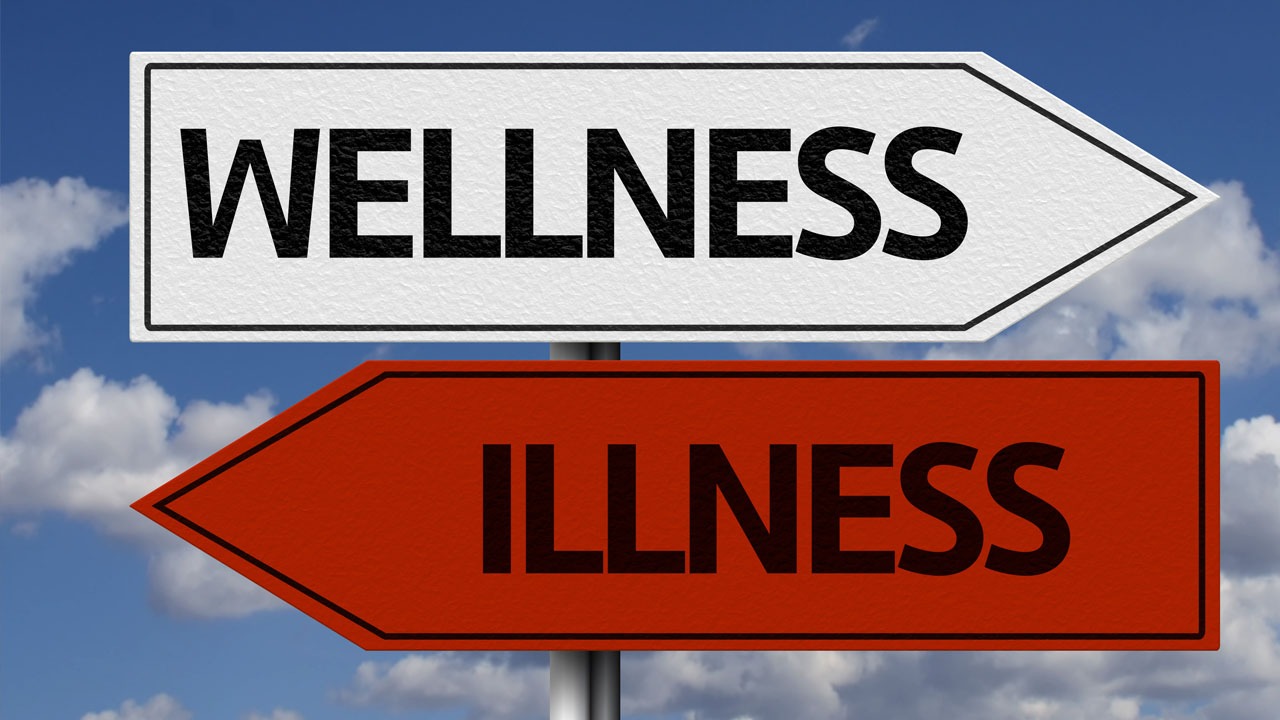Did you know nearly 1 in 2 adults will experience a musculoskeletal condition in their lifetime? From aching backs to stiff joints, these issues aren’t just a nuisance—they’re a leading cause of lost productivity, chronic pain, and decreased quality of life. But there’s good news: Empowering yourself with the right knowledge and habits can transform your musculoskeletal health, helping you move, work, and live better every day. Read on for insights and practical steps you can start using today!
Musculoskeletal Health Matters: Understanding the Foundation of Well-being
- Most people will experience musculoskeletal pain in their lifetime—did you know almost 1 in 2 adults suffer from a musculoskeletal condition?
- Explore the vital role musculoskeletal health plays in everyday movement, productivity, and mood, alongside its impact on overall health.
Musculoskeletal health is the backbone—literally and figuratively—of your overall well-being. By supporting your bones, joints, muscles, and connective tissues, a healthy musculoskeletal system enables you to walk, lift, sit, and enjoy life’s daily activities. Unfortunately, the overwhelming prevalence of musculoskeletal conditions means that millions of people each year experience discomfort, miss work, and face growing health care and indirect costs linked to persistent pain and reduced mobility.
Musculoskeletal health isn’t just about avoiding pain—it's about optimizing your physical activity, maintaining independence as you age, and even uplifting your mental health. Well-functioning bones and joints contribute directly to productivity, mood, and overall quality of life . The risk of low back pain, arthritis, and osteoporosis rises as we age, but with early intervention and the right habits, you can lessen that risk and continue living life to the fullest. Understanding the musculoskeletal system forms the first step in taking control of your health—no matter your age or current fitness level.

What You’ll Gain from Prioritizing Musculoskeletal Health
- Key strategies for supporting musculoskeletal health at any age
- How to recognize early signs of musculoskeletal pain and act
- Practical guidance on prevention, lifestyle modifications, and accessing health services
When you focus on your musculoskeletal health , you invest in more than just pain-free movement. You lay the foundation for resilience against future injury, greater independence, and long-term wellness. This article guides you through the best strategies—nutrition, exercise, early symptom recognition, and knowing when to seek out health service or consult a care provider—that apply to everyone from teens to older people.
You’ll also learn how to spot warning signs, such as chronic joint stiffness or persistent low back pain, and take decisive action before these issues develop into debilitating musculoskeletal disorders. By embracing proactive habits and seeking timely medical help, you can dramatically decrease your risk of disability, lower your health care costs, and enjoy a higher quality of life.
Incorporating age-appropriate fitness routines is another powerful way to support your musculoskeletal system, especially as you get older. For practical advice tailored to mature adults, explore these 10 fitness tips for over 45s that can help you stay active, strong, and resilient at any stage of life.
Essential Facts: Musculoskeletal Health, Musculoskeletal Conditions, and Health Services
| Condition | Symptoms | Causes | Health Services Available |
|---|---|---|---|
| Osteoarthritis | Joint pain, stiffness, swelling, limited movement | Age, genetics, injury, overuse | Primary care, rheumatology, physiotherapy |
| Osteoporosis | Brittle bones, fractures, loss of height | Aging, hormonal changes, insufficient calcium/vitamin D | Endocrinology, bone density tests, nutritional counseling |
| Back Pain/Low Back Pain | Soreness, restricted movement, radiating pain | Poor posture, injury, muscle strain, sedentary lifestyle | Physiotherapy, orthopedic specialists, pain management clinics |
| Rheumatoid Arthritis | Inflamed, swollen, and stiff joints; fatigue | Autoimmune, genetics | Rheumatology, medication management, occupational therapy |
- Definition and examples of musculoskeletal conditions—arthritis, osteoporosis, back pain, and more
- Importance of timely access to health services for managing musculoskeletal health and reducing disability
Musculoskeletal conditions —including arthritis, osteoporosis, and back pain —are the leading cause of disability worldwide. Early diagnosis through regular screenings and quick access to health service providers can prevent mild symptoms from evolving into chronic, potentially disabling conditions. Health services such as primary care, specialist consults, and physiotherapy can manage and even reverse symptoms when utilized early, supporting long-term musculoskeletal health . Don't underestimate the impact of preventive care: routine check-ups can make a world of difference.
If you or someone you care for experiences new or worsening musculoskeletal pain, reach out for health care advice without delay. United States health system data show that people with musculoskeletal conditions enjoy better outcomes and quicker recovery when they have prompt access to coordinated care.
Understanding Musculoskeletal Pain: Causes, Symptoms, and Prevention
How Musculoskeletal Pain Affects Daily Life
- Explore the impact of back pain, low back pain, and joint discomfort on work, mobility, and mental health
Musculoskeletal pain can be more than a physical challenge—it can reshape your workday, impede your hobbies, and chip away at your mental health . From acute low back pain that interrupts your ability to sit comfortably to ongoing joint discomfort that affects your sleep, each experience has a ripple effect on your daily routines and ambitions. Even moderate pain can lead to decreased concentration, trouble participating in physical activity, and heightened risk of depression or anxiety.
Occupational factors play a significant role too. Poor posture, repetitive movements, or inadequate ergonomics in the workplace can lead directly to chronic back pain or other musculoskeletal disorders. Older people, especially those with physically demanding jobs or sedentary lifestyles, are particularly vulnerable. Many people with musculoskeletal pain also experience a decline in social interactions and reduced quality of life. Addressing these pains early can minimize disruptions and prevent escalation to chronic or disabling conditions.

Common Musculoskeletal Conditions and Their Symptoms
- Breakdown of typical symptoms by condition: joint stiffness, swelling, persistent pain, and restricted movement
Musculoskeletal conditions present with varied symptoms, but some red flags are common: persistent joint stiffness (especially after periods of inactivity), visible swelling, aching or sharp pain that doesn’t subside, and an overall decrease in your range of motion. These issues can signal anything from acute injury to the onset of chronic diseases like rheumatoid arthritis or osteoporosis.
Symptoms may also include muscle weakness, numbness, localized tenderness, or fatigue. Notably, low back pain is one of the most frequently reported complaints in adults, often signaling issues with posture or underlying musculoskeletal disease. Recognizing these early warning signs is key to prompt intervention and successful management—don’t ignore swelling or pain that persists beyond a few days, especially if it restricts your daily activity.
Proven Strategies to Improve Musculoskeletal Health
Daily Habits for Better Bone and Joint Health
- Nutrition and supplements: calcium, vitamin D, anti-inflammatory foods
- Exercise routines: strength training, stretching, posture improvement
The best defense against musculoskeletal conditions is a proactive daily routine. Eating a balanced diet rich in bone and joint nutrients—calcium, vitamin D, protein, and anti-inflammatory foods like colorful vegetables and fatty fish—strengthens bone density and supports tissue repair. For many, a multivitamin or dedicated supplement can help fill gaps, but always check with your care provider before starting anything new.
Regular physical activity is equally important. Exercise routines focusing on strength training, flexibility, and posture can significantly reduce the risk of injury and chronic pain. Activities such as swimming, walking, and yoga are joint-friendly options for older people. Don’t overlook the value of proper posture; simple alignment awareness throughout your daily activities can prevent back pain and low back pain before they begin. Aim for a mix of aerobic exercise and targeted stretching to maximize your musculoskeletal health .

Pain Management Techniques to Prevent and Relieve Musculoskeletal Pain
- Self-management strategies, physical therapy, and professional pain management options
Effective pain management starts with understanding your pain’s cause and choosing appropriate responses. Self-care approaches may include gentle movement, ice/heat therapy, over-the-counter medications, and regular stretching. For persistent or worsening pain, consulting a care provider is crucial—early intervention through physical therapy can improve mobility, correct posture, and teach you how to prevent future injuries.
Professional options range from targeted exercises and massage therapy to specialized interventions at pain management clinics or orthopedic specialists. Always follow up with health care professionals if home measures aren’t enough. Timely health services can make a significant difference in long-term outcomes for people with musculoskeletal pain.
Role of Health Services and Care Providers in Musculoskeletal Health
Finding the Right Care Provider for Musculoskeletal Conditions
- When to seek specialized health services, such as rheumatology, orthopedics, or physiotherapy
- What to expect at your first consultation for musculoskeletal pain or injury
Finding the right care provider becomes essential when you’re faced with a musculoskeletal condition —especially one that doesn’t improve with self-care or keeps coming back. Primary care physicians are your first line of defense and can refer you to specialists like rheumatologists for diseases such as rheumatoid arthritis , orthopedic surgeons for bone and joint injuries, or physiotherapists for rehabilitation.
At your first visit, expect a thorough medical history, a physical exam focusing on affected areas, and possibly diagnostic tests like X-rays or MRIs. Health services will tailor a care plan that may include medication, physical therapy, or referrals for further evaluation. With musculoskeletal health, prompt action can mean the difference between a quick recovery and months of chronic pain.
Coordinated Health Services for Comprehensive Musculoskeletal Care
- How multi-disciplinary teams support musculoskeletal health—from diagnosis to rehabilitation
Comprehensive management of musculoskeletal conditions often involves a team-based approach. Multi-disciplinary teams—combining doctors, physical and occupational therapists, nutritionists, and sometimes mental health professionals—deliver coordinated care informed by each professional’s expertise. This collaboration ensures continuity from diagnosis through treatment and rehabilitation, improving the quality and efficiency of care.
Regularly accessing health services for preventive screenings and ongoing management enables people with musculoskeletal disorders to remain mobile, independent, and pain-free. These teams excel in customizing therapies, setting realistic goals, and providing the ongoing support necessary for long-term success.

The Connection Between Musculoskeletal and Mental Health
- Impact of chronic musculoskeletal pain on mood, anxiety, and quality of life
- Coping mechanisms and support services for holistic well-being
The link between musculoskeletal health and mental health is powerful. Chronic pain —especially long-lasting back pain or joint discomfort—can lead directly to stress, depression, and anxiety. Studies show people with persistent musculoskeletal pain often experience a higher risk of sleep disturbances, social withdrawal, and reduced self-esteem.
It’s crucial to recognize these emotional effects early and seek holistic support. Coping strategies include mindfulness meditation, structured physical activity, and participation in support groups. Many health services also offer counseling or psychological support as a routine part of musculoskeletal disease management. Prioritizing both body and mind strengthens overall well-being and quality of life.

Reducing Risk: How to Prevent Common Musculoskeletal Problems
- Ergonomics at home and work
- Injury prevention: proper lifting, maintaining a healthy weight, regular physical activity
- Early screening and intervention strategies offered by health services
Preventing musculoskeletal problems starts with everyday choices. Ergonomics —arranging your workspace to promote good posture and minimize strain—helps dodge repetitive stress injuries. This means adjusting chair height, monitor placement, and keyboard/mouse setup. Likewise, lifting heavy objects with correct technique (bending at the knees, keeping loads close) drastically reduces your risk of strain or acute injury.
Staying physically active, maintaining a healthy weight, and scheduling regular health screenings empower you to catch and correct issues before they escalate. Many health services offer early intervention programs, which are especially helpful for older people or those with family histories of musculoskeletal diseases. Prevention is always preferable to treatment’s complexity and cost.

Expert Insights: Quotes on Enhancing Musculoskeletal Health
Dr. Jane Doe, Orthopedic Surgeon: “Prevention is the cornerstone of lifelong musculoskeletal health—simple daily actions can yield remarkable results.”
Physical therapist insight: “Consistent movement, posture awareness, and early pain management prevent most musculoskeletal conditions from progressing.”
Quick Reference: List of Tips for Boosting Musculoskeletal Health
- Stay active with joint-friendly exercise
- Eat a balanced diet rich in bone-supporting nutrients
- Prioritize good posture throughout the day
- Seek prompt advice for persistent musculoskeletal pain
- Utilize health services for regular screenings
People Also Ask: What can affect your musculoskeletal health?
Factors Impacting Musculoskeletal Health
- Aging, genetics, inactivity, repetitive movement, poor diet, accidents, and chronic disease all influence musculoskeletal health and risk of developing musculoskeletal conditions.
Various factors can affect musculoskeletal health , including the natural aging process, genetic susceptibility, chronic diseases, and lifestyle choices. Lack of physical activity , repetitive strain from certain jobs, poor nutritional habits, and improper form with lifting or exercise can all contribute to musculoskeletal disorders. Additionally, accidents or injuries can provoke acute pain or long-term limitations. Implementing preventive measures can tip the scale in your favor, regardless of your individual risk factors.
People Also Ask: What are the symptoms of musculoskeletal problems?
Recognizing Symptoms of Musculoskeletal Conditions
- Typical symptoms include muscle aches, joint pain, swelling, restricted movement, weakness, numbness, and persistent low back pain or back pain.
Musculoskeletal problems often manifest as muscle aches, persistent joint pain, swelling, stiffness, numbness, weakness, or difficulty with everyday motions. Low back pain , neck pain, and reduced flexibility are also hallmark signs. Ignoring these symptoms may allow acute problems to become chronic, making early recognition and intervention with a care provider or health services critical.
People Also Ask: Why have I been referred to musculoskeletal?
Understanding Your Referral to Musculoskeletal Health Services
- Your care provider may refer you due to persistent pain, injury, suspected musculoskeletal condition, or unresponsive symptoms requiring specialist evaluation.
A referral to musculoskeletal health services often indicates that your symptoms have not resolved with initial treatment or that your care provider suspects a complex musculoskeletal disorder. These services provide advanced diagnostics and access to a range of specialists to uncover the root cause and deliver a more comprehensive care plan, which may include physiotherapy, imaging, or consultations with orthopedic or rheumatologic experts.
People Also Ask: What are five-five signs and symptoms of a musculoskeletal injury?
Identifying Signs of Musculoskeletal Injury
- Swelling, bruising, pain during movement, redness or warmth, limited mobility — these are red flags for musculoskeletal injury that should prompt consultation with a care provider or access to health services.
Watch for swelling, bruising, or pain that intensifies with movement, redness or warmth in the affected area, and limited range of motion or mobility. These classic signs of musculoskeletal injury demand prompt attention from a care provider to prevent complications and speed recovery.
FAQs About Musculoskeletal Health
-
How can I maintain musculoskeletal health as I age?
Staying active, eating a balanced diet, monitoring weight, and attending regular health screenings are keys to long-term musculoskeletal health. Safety at home, fall prevention, and routine check-ins with your care provider are also crucial for older people. -
What health services should I use for chronic musculoskeletal pain?
For ongoing pain, specialized health services such as pain management clinics, physiotherapy, and specialist consults in orthopedics or rheumatology may be necessary. Primary care can guide your path to the right treatments and referrals. -
Are musculoskeletal conditions reversible with early intervention?
Many musculoskeletal conditions can be halted or even reversed when detected and addressed early, especially through structured physical activity, proper nutrition, and regular medical follow-up. -
What is the difference between acute and chronic musculoskeletal pain?
Acute pain comes on suddenly and is usually short-lived, while chronic pain persists for weeks or months. Chronic musculoskeletal pain may be ongoing due to conditions like arthritis or injury, often needing more comprehensive and multi-faceted care.
Key Takeaways for Lifelong Musculoskeletal Health
- Prevention, early recognition, and timely health service access are essential
- Lifestyle changes and coordinated care providers support better musculoskeletal health
- Education empowers individuals to reduce risk and live pain-free
Start Your Path to Better Musculoskeletal Health Today
- Take charge of your bone and joint health — consult a care provider, access health services, and adopt the proven strategies outlined above to live stronger, healthier, and pain-free.
Watch: Guide to Everyday Movements That Protect Musculoskeletal Health
- Video tutorial on posture correction, stretching exercises, and safe lifting techniques.
- Expert panel explains musculoskeletal conditions, common symptoms, and navigating health services for prompt relief.
- Quick demonstration of self-care strategies, gentle movement, and pain management for both acute and chronic musculoskeletal pain.
Take Action: Don’t wait! Apply these tips, consult your provider, and start protecting your musculoskeletal health—so you can move pain-free and live to your fullest every day.
If you’re inspired to take your well-being even further, consider how a holistic approach can amplify your results. Integrating mindful self-care and lifestyle practices can support not only your musculoskeletal system but your overall health and happiness. Discover practical ways to nurture your body and mind with these mindfulness practices to enhance self-care , and unlock new levels of resilience and vitality on your healthy living journey.
To further enhance your understanding of musculoskeletal health, consider exploring the following resources:
-
The World Health Organization’s fact sheet on Musculoskeletal health provides comprehensive insights into the prevalence, impact, and management of musculoskeletal conditions globally. ( who.int )
-
The article Reducing the global burden of musculoskeletal conditions published in the Bulletin of the World Health Organization discusses strategies to address the challenges posed by musculoskeletal disorders worldwide. ( pmc.ncbi.nlm.nih.gov )
These resources offer valuable information to help you take proactive steps toward improving and maintaining your musculoskeletal health.
 Add Row
Add Row 

 Add
Add 


Write A Comment